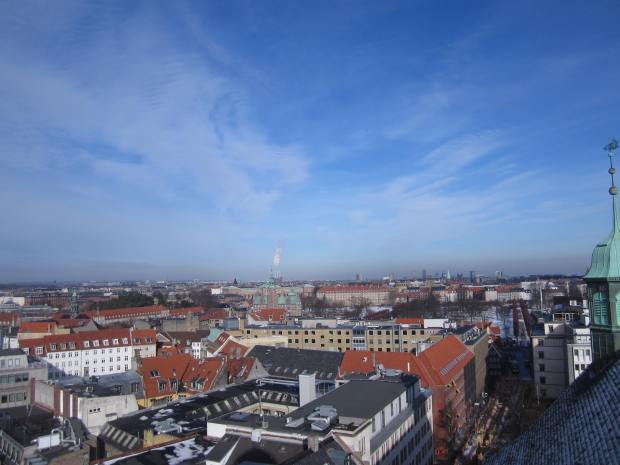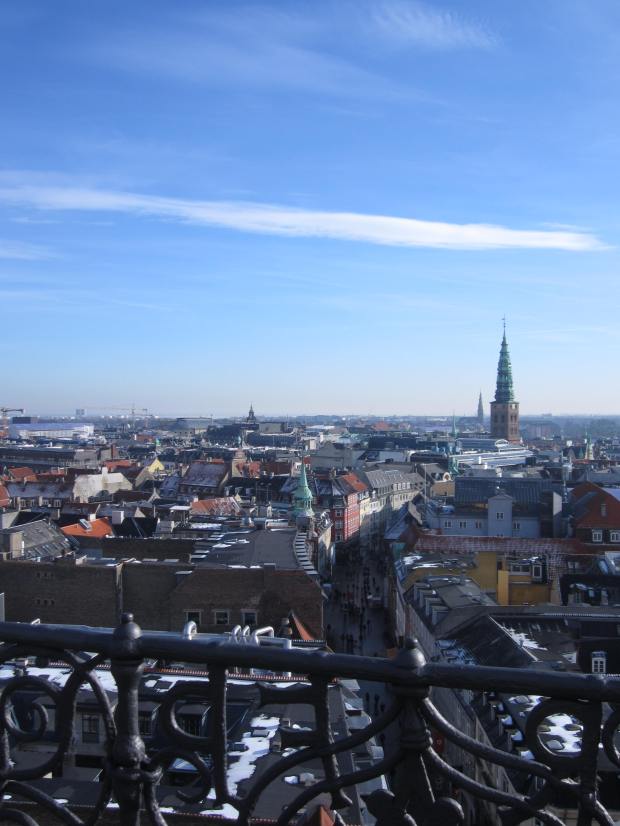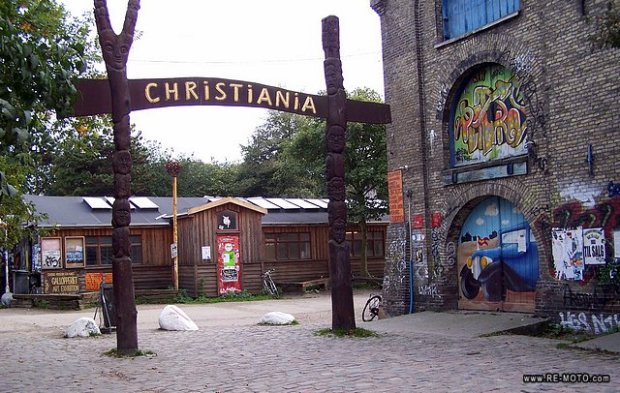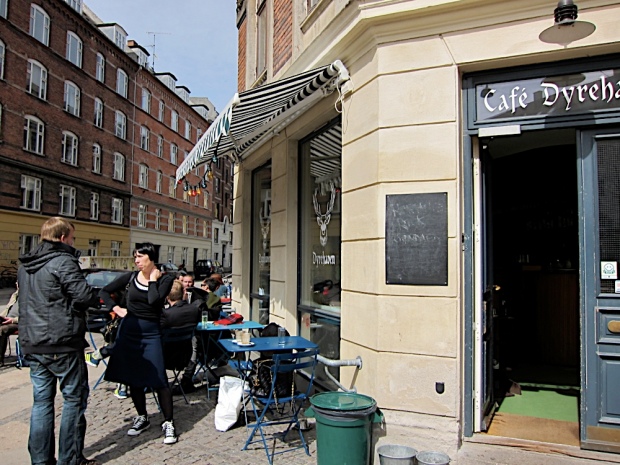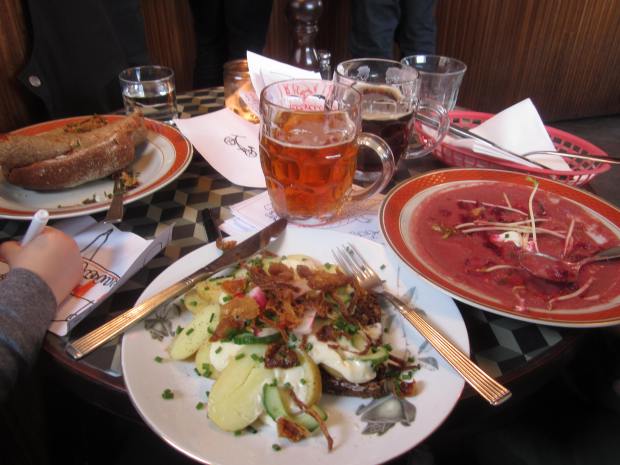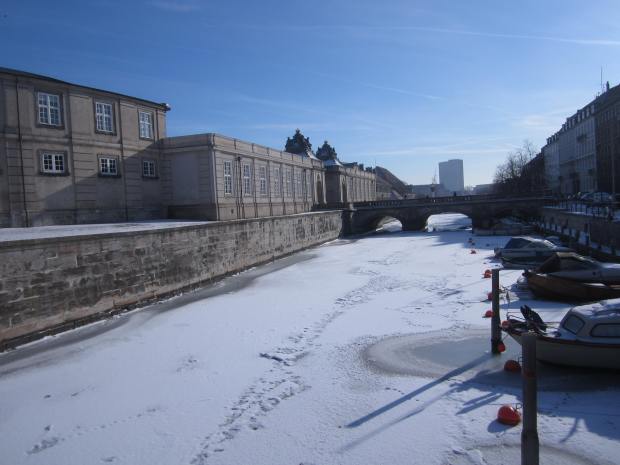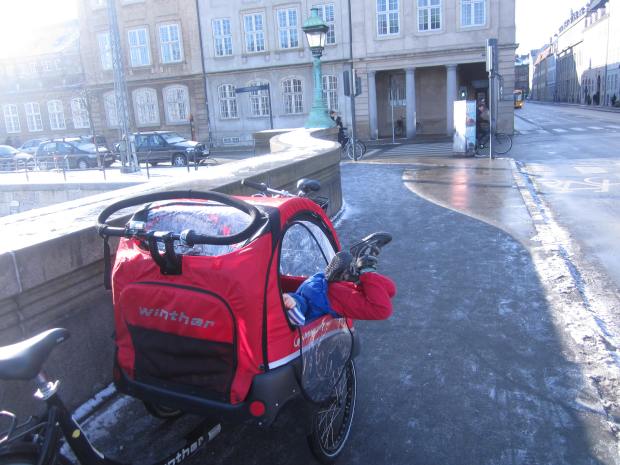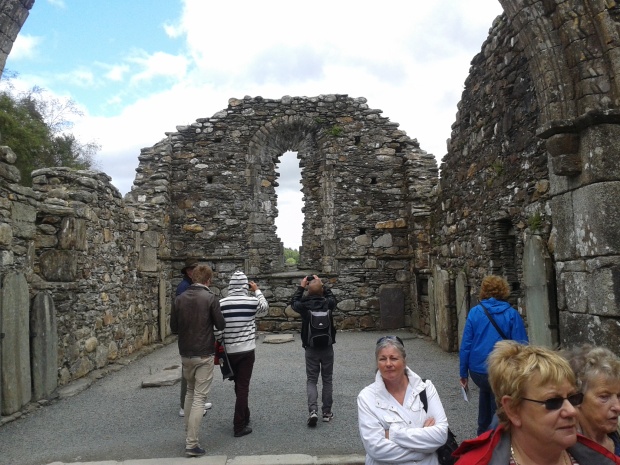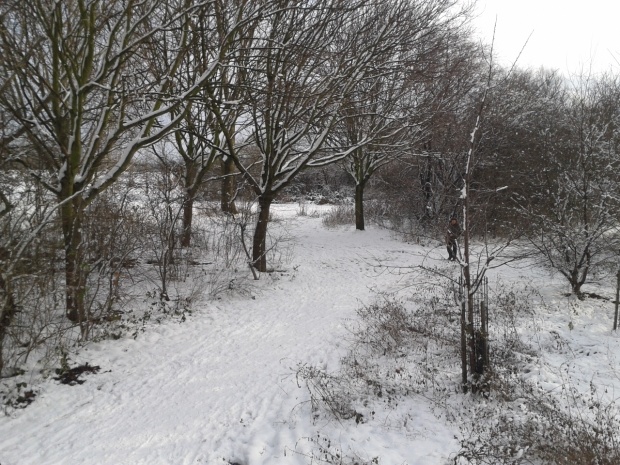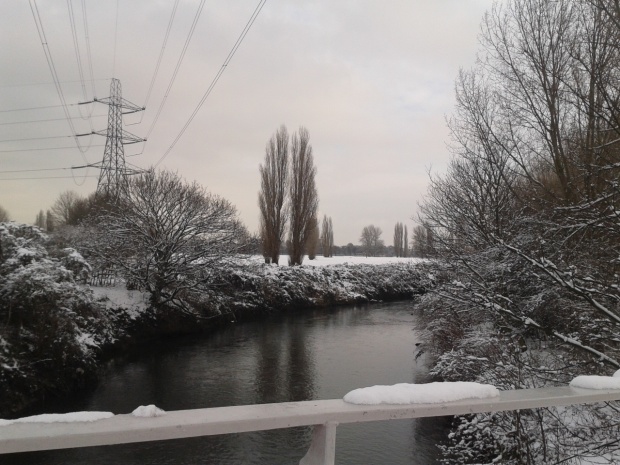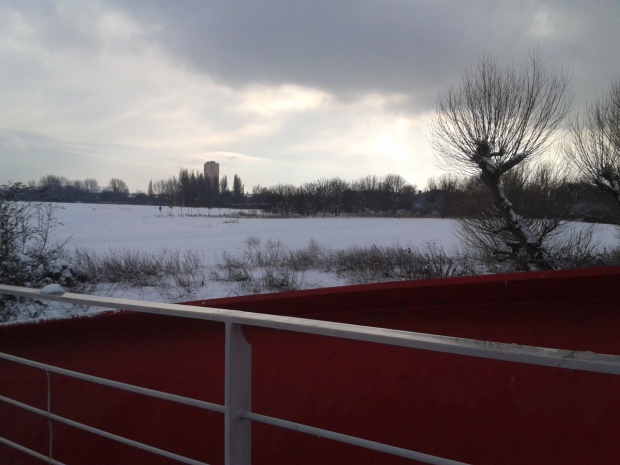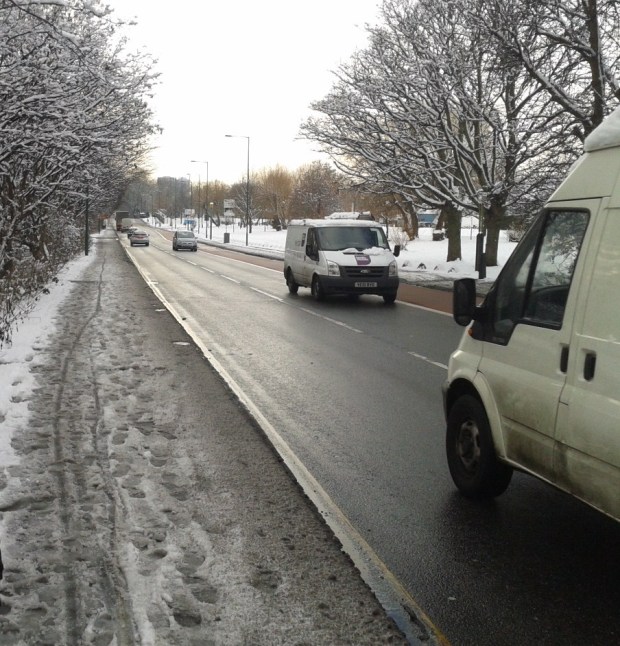Won-derful, Won-derful, KØBENHAVN!
As the Northeastern United States has finished recovering from the inexplicably named Superstorm Nemo, and as we prepare to head off to Oslo for a few days, I reflect this week on our Northern vacation last February up to the city of Hans Christian Anderson and macabre, underplayed murder mystery serials, the Danish capital of Cophenhagen.
It’s true, some prefer to go someplace warm and Mediterranean to escape the cold — hours lounging on the Costa Del Sol perhaps or maybe some Island hopping in Sardinia and Corsica — but not us. My wife, being Irish, tends to react to the sun the same way the witch of the west reacts to water, and I, being raised in Northeastern Pennsylvania on the Mount of Pocono… by wolves, tend to prefer the cold wintry winds and see them like a refreshing tonic to the system. Besides, the missus has a penchant for design and no one is more beloved in the design world right now than the Scandinavians. And I’m easy and I like the ancient and proud notion of beautiful and desolate North.
And Easyjet flies there fairly cheaply. Bonus!
But I have to admit, aside from visiting the Design Museum and the Lego Flagship store (Lego is Danish! Yes, really!), we didn’t really know what to expect of Copenhagen. It turned out to be full of surprising delights.
Going from Place to Place
Transport for instance, which, I know, is usually relegated to the end of the writeup under a subheading like “getting around” or “Tubes and buses” or, in some countries, like Ireland, “Good Luck”, was one of the most exciting elements of our Danish getaway. We touched down thinking that it was a Scandinavian city and so bound to have an efficient underground and bus network of which we would take full advantage. But by our first evening, we couldn’t help but notice that there was really only one main, preferred mode of transport: Bikes!
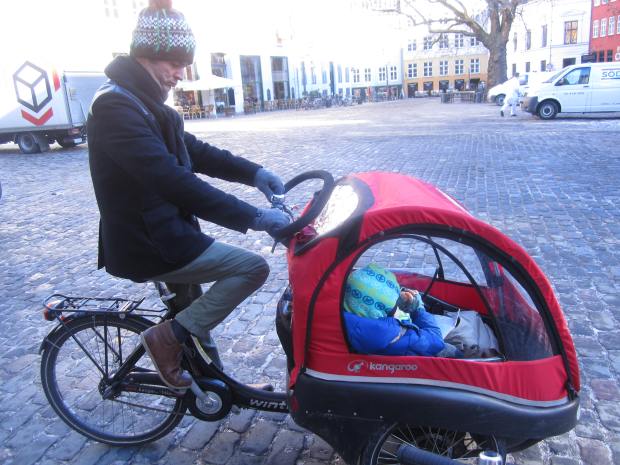
Ring my bell? Me, looking ever so slightly confused pedaling my son around in one of the famed Christiania Bikes. (photo by Paula Hughes)
Everyone rides a bike in Copenhagen, including the tourists. And because of the sheer joy of doing as the Romans do but not having done it in years, this became our healthiest holiday in years. We rented a standard issue four speed for the other half and a Christiania Bike, the kind that were actually invented in Denmark, in which to transport my son.
And we biked for miles every subsequent day of our stay. Gloriously, we cycled through snow, over bridges, in sun and warmth, in traffic and out of town until our leg muscles ached with a kind of gladsome soreness at the close of each day. As Copenhageners are well catered for with cycling lanes on every road, cycle traffic lights, and even metal footrests for when you are waiting for a light to change, biking in this bustling hub was easy, exhilarating, and inspiring (we bought bikes on our return to London). And for my money, the only way to travel around.
The Views
Other impressive elements of the Danish capital included its sheer and audaciously impressive grandeur. We visited the Rundetarn on our first full day and were awed. A cylindrical edifice built in 1642 by King Christian IV as an astronomical observatory (Remember Tycho Brahe from Science class? Danish.), it is essentially a cobblestone pathway that ascends spirally for 686 feet affording a breathtaking view of all of the city from the top.
The “Quirky” Neighborhoods
When we first started exploring different parts of the world, being vegetarian, we acquired the habit (naturally) or seeking out vegetarian restaurants in each new city. It’s become a kind of pastime and it always tends to lead us into the most intriguing parts of a city. Thus you will find vegetarian cookery in The Lower East Side, Soho (the original, you know William Blake’s Soho), Stoke Newington, Kensington Market in Toronto, Montmartre in Paris, and artsy, bohemian neighborhoods in Edinburgh, Amsterdam and Madrid. So it was with Copenhagen, but the area, in this case, formed part of the main “destination” or attraction.
The Freetown of Christiania is a ramshackle collection of dirtstreets, homemade houses, caravans, corrugated iron roofed houses, and some new cheap chic looking warehouse studios that falls within the confines of Copenhagen, but outside its laws. Originally a deserted military barracks until squatters took up residence in the 70s, it now boasts a 1,000 residents. Drugs can be bought fairly openly on the streets and there is a wonderfully hippy-dippy free spirit about the place. Despite being on the map, it’s also charmingly difficult to find. We ate hearty vegetarian stews in a clapboard cottage-housed cafe called Morgenstedet and despite the food being delicious and the staff being uncharacteristically effusive (the Danes don’t effuse), the fire-in-a-steel-drum charm of Christiania wore a bit thin on us and we began to worry about the safety of our bikes.
Still, a fascinating wander off the beaten path just for the sheer sight of this community outside of the laws of its surrounding community. And the cheapest hearty lunch to be had in Denmark.
Lego!
Yes, we all love Lego and it was a brilliant store, but even more brilliant was how child-friendly a city it was and how child-centered a culture it seems to be. Scandinavians don’t tend to send their children to school or even think about teaching them explicitly how to read until they’re about seven. It may all sound a bit Steiner School, but it also values the idea of a child being allowed to have a free and well adjusted childhood full of play. Not for nothing do our Northern neighbo(u)rs give some of the most generous parental leave of any country in the developed world. Children are encouraged to form strong bonds that will see them through adulthood with confidence. Parents and their charges are openly affectionate and lavish attention lovingly and unashamedly. We could learn a lot.
Plus, Lego!
Food and Drink
It surprised me that Copenhagen has recently developed into a culinary capital, but it was a surprise beyond mere joy, especially with a fantastic place like Bio Mio.
Food is comforting and divine, but the fun element is in the ordering — from a “mood-based” menu, directly from the chefs. I ordered from our chef, trying my one stock Danish phrase, “Taler du Engelsk?,” to which the Danes stock reply was, “Yah. Of course.” To this day, I can’t figure out whether “Yah, of course” is a stock reply they learn when in school or whether they just think it’s mind-numbingly obvious to any foreigner that all Scandinavians speak English better than quite a few native English speakers, but whichever the case, it’s delivered with such amiability and charm that it has to induce a smile, as did our night of dining at this lovely eatery.
And for lunch to Dyehaven, which, again, reminded me of a trendy place you’d find in the lower East Side, or rejuvenated and trendy West Philly, with its artsy locals meeting for a pint over some warming vegetable soup or some impressively tasty beetroot-dependent vegetarian smorgasbord, which of course, we could not leave Denmark without trying. As in the UK and the US, the craft beer movement is in full swing here in Denmark and the local brews were delightfully sophisticated, a party on the palate for the beer connoisseur.
And who could forget, Danish Pastries! They really are delicious, but they don’t really call them Danishes in Denmark.
Well, they wouldn’t, would they?
They call them wienerbrød (literally “Viennese Bread”) and really, what better way is there to start the day. I can’t imagine a single health benefit, but some mouth-wateringly flaky wienerbrød topped with chocolate or cinnamon does transport you. It transported me anyway.
Best of all though… Snow!
Some people really despise snow. They can’t stand the cold, are frustrated by the icy roads, and won’t take a step outside.
I wonder if those people have ever been to Copenhagen.
Although I’m often asked if I miss America, one of the things I miss most is a proper snowy winter to rejuvenate the soul. Snow, having fallen faintly and faintly fallen gently on the back or our necks hours after checking into our hotel in Copenhagen, snow that chilled the air and seeped into our bones, invigorating our constitutions, that froze the harbo(u)r as we strolled through Nyhavn, packed tightly as we threw it at each other with gusto, snow that rested gently on every branch and bough as we rode through light layers of it, covering the streets of Frederiksstaden, on a crisp morning on the way to a comforting breakfast, snow renewing an innocent spirit of joy. Here it is in the far North in all its arctic, purely driven, exhilarating grandeur and glory (yes, thank you Geography majors I know that’s not quite correct) in a place that wears a dusty blanket of snow with a particular panache.

“His soul swooned slowly as he heard the snow falling
faintly through the universe and faintly falling, like the descent of their last end, upon all the living and the dead.” James Joyce, “The Dead”
And with that, we turn our heads away from the snowy North and its enthrallingly desolate beauty and turn our heads towards Spring, which is supposed to come early according to Punxatawney Phil. Before we do, here’s another ode to the Danish storyteller Hans Christian Anderson, an oldie, but goodie.
All photos were taken by Paula Hughes.
Following in the Steps of Saints and Scholars: Glendalough, County Wicklow
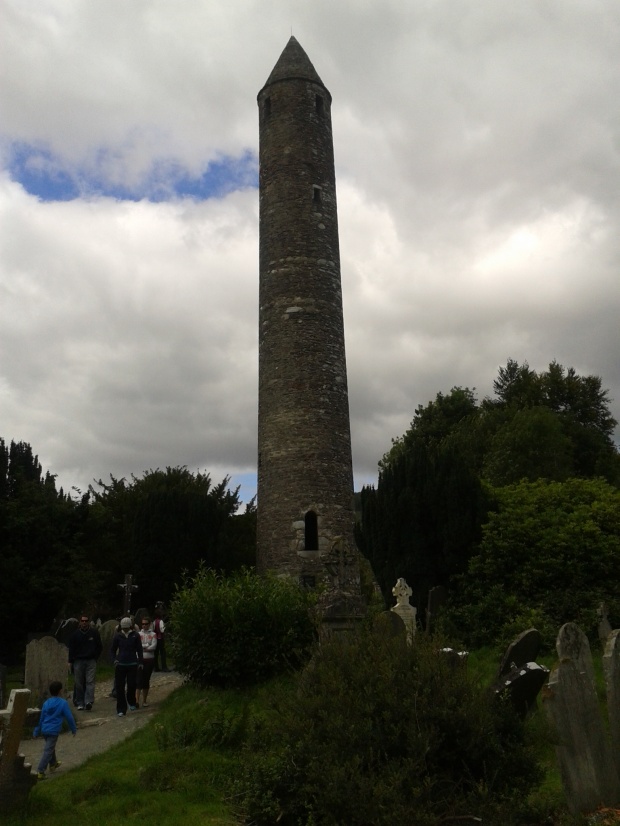
Try to scale that, marauding tourists… I mean vikings! The Round Tower in Glendalough. No one really knows how the holy brothers got in or out.
As I’ve said before, 2013 has officially been dubbed The Year of The Gathering, for the duration of which Ireland will play host to the whole diaspora of its sons and daughters come back to see the homeland, to reunite with family they didn’t even know they had, to disabuse themselves of illusions to do with leprechauns and to generally appreciate all about the land that disproportionately produces world-class poets such as Patrick Kavanagh, Yeats, Joyce, Beckett, Michael Longley, Louis Macneice, Paul Durcan, Paul Muldoon, Derek Mahon, Seamus Heaney (insert name of your favo(u)rite here) and many others besides.
But let’s face it. In order to see the best that Ireland has to offer, you need to rent a car. I don’t think I’ll be saying anything controversial or intensely debatable when I assert that Ireland’s public transport system is neither cheap nor efficient. Its urban rail system, the DART (Dublin Area Rapid Transit) is one of mechanized transportation’s great misnomers and I’ve taken train journeys down to Kerry that involved long and tedious connecting coaches from Mallow in Cork (I don’t know so don’t ask). But that is Ireland’s pace and part of its peculiar and particular charm.
But thanks to the Celtic tiger of the 90’s and noughties, Ireland’s road system has undergone some massive modernization, especially around the cities, and is a general pleasure to drive around, basking in the rural fields of green flanking either side of some fairly efficient, if a tad congested thoroughfares (I know those who have experienced them will take this as irony and I’ve been in the traffic jams too, but they’re not that bad).
And what rewards to be reaped from driving 10-15 minutes in any direction outside the capital, from Brittas Bay on the Wicklow coast to the passage graves of the Boyne Valley, from Bray Head south of Dublin to Howth Head to the North.
Such as this gem just 40 minutes south of Dublin as you whip round the quiet country roads, Glendalough (literally, “Glen of Two Lakes”). Glendalough is where the famed sixth century Irish ascetic, St. Kevin, sought refuge from his followers and is said to have slept in a bronze age cave at the edge of the mountain. Who can blame him for wanting to stay in this place? On a fair day, such as the one we visited on, views anywhere in Glendalough are stunning.
The gently rolling brooks and streams make for peaceful passing of a lovely day.
The rural splendor can only possibly elevate and inspire the soul.
And at the same time it is a place steeped in the spiritual heritage of this island, featuring several different stone churches near the hiking trail on the site, dating back as early as the 10th century. Oddly enough, there were marauding American tourists that were over for the Notre Dame vs. Navy taking place at the Aviva Stadium. My compatriots were a tad loud, brash and somewhat badly dressed, but generally pleasant. Just as I was feeling on the verge of an epiphany amidst the graves and medieval stone structures, I heard a voice, as if it ‘buzzeth in mine air’ from a rotund lady in sunglasses just to my left saying, ‘WHAT’S THAT, CHER? THAT’S RIGHT. MEET YOU BY THE CHURCH.’ Ah the high dulcet tones of the North Atlantic twang. That, as I have said many times before, is our charm. We don’t mind how much like sore thumbs we stick out; we will blunder confidently on in hopes of a miracle… or a little guidance.
Notwithstanding being surrounded by my countrymen, there is a blanket-like tranquility in the air, a permeating peace and beauty, that leaves no wonder as to why the Irish landscape has inspired such mysticism in its poets.
Well worth the day if you’re going to be in Ireland or could make a very good reason to make the trip.
For car rental, Enterprise’s Dun Laoghaire office just south of Dublin cuts right through all the minutia and hassle of holding insurance on cards and all that palaver. There are a couple nice pubs and restaurants in Glendalough, but you’d be better off following the signs north again towards Avoca in Kilmacanogue for a lovely plate of food and a soothing stroll along the grounds.
Go. Be inspired! Feel the rhythm of your feet along the ground informing your consciousness in verse. Come back and tell me about it!
Walking in a London Wonderland
We had our biannual snow day two weeks ago, but unfortunately, my son’s school was still open. This presents a slight problem when all you want to do is go play in the snow and your living, breathing excuse to do so — your small child — has gone off to school for the day. How dare he.
So instead of building snowmen and pegging each other with well-packed balls of ice, the missus and I took a brisk and beautiful walk along the Hackney Marshes, a vast swathe of green space local to our part of East London, providing playing fields and picnic spaces in fair weather, and bright, crisp splendor in the winter as you can see here.
What I began to notice as I savo(u)red the beautifully self-contained sound of snow compacting underfoot was the underestimated panoramic joy afforded us so close to the center of one of the largest and busiest capital cities in the world. And how it genuinely feels ever so slightly different to stroll though open spaces and trails that neighbo(u)r the grey, sludgy, dull roar of busily trafficked thoroughfares like the industrial Orient Way and Leabridge Road, a stretch that slices right from Hackney to Whipps Cross, just short of Essex. So, with the following photos, I have tried to capture something of the uniqueness of nature within earshot of the chorus of rumbling engines and angry horns scurrying about the roads on their daily grind. I hear it’s snowing again in many parts of America. I hope this captures the brighter side of it. Enjoy.

Old England, looking a bit like what I envision New England looks like in my unschooled imagination. Puts me in mind of Emerson, Thoreau, Frost etc…
Three Expat American Writers You Must Read

The Turn of the Screw, A haunting American Gothic tale about the protection of innocence… (Taken from The Londonist.com)
I went to see the spine-chilling tale The Turn of the Screw Tuesday night in The Almeida Theatre in Islington, my review of which appears on The Hackney Hive soon to be followed by an interview with the famed director Lindsay Posner. It’s a deliciously indulgent and penetratingly haunting tale about a young governess trying to protect her charges from the corrupt influence of phantoms from the past. I could go into an interpretation that sees this as an analogy for the American condition, but like jokes, some figurative comparisons just write themselves.
But seeing The Turn of the Screw led me to thinking about Henry James, a man with whom I’ve always felt a bit of a kinship since he is American-born, but lived for so long in Merry Old England, like myself, negotiating the foggy obscurities of being a stranger in a strange land, always living as though his soul is split in half, a condition that seems perfectly reflected in the dense and difficult resistance a reader encounters in the language of say The Beast in the Jungle or Daisy Miller, the latter featuring an American character trying to find herself ‘on the continent’ and ending up doing the opposite.
But funnily enough, it took leaving America to appreciate American culture. It was only after I left, and especially after I started teaching in Ireland, that I started to appreciate the genius of Arthur Miller, Mark Twain, and Emily Dickinson to name but a few.
What has intrigued me for years though is the number of writers who’ve gone a bit further than their “tour of the continent”; those writers who, like James, left their homeland to find their own sense of belonging and in so doing carved out for themselves a new literary identity. Not to put too fine a pretentious point on it. Here are three of my favo(u)rites. A by no means exhaustive list, but certainly some good ones to start looking at writers who’ve traveled to find home.
1. Edgar Allan Poe

You old devil, you. The Master of the Macabre was practically a Hackney boy. (taken from poetryfoundation.org)
What do you mean Poe doesn’t count? He went to school in Chelsea and then got gritty and spent 3 years in Stoke Newington right here in Hackney, East London. It’s no wonder his writing is permeated with gloom and shadow. He had some easy material growing up in the gloom and shadow first in Irvine Scotland and then down here in the famed London fog living through the tumultuous “year without a summer”. Sure, he was only a child, but these were surely his formative years.
Besides, it’s easy to underestimate Poe, as a staple of the school curriculum of most American schools, the assumption is that he’s kid’s stuff — high class pulp. But see past that for a second and you’ll see the Derridians and Barthesians who have done so much to revive him are right: his work is all about the obscure nature of existence and the horror of uncertainty. What is more expatriate than that?
What’s a real pity is that so many seem to miss his bleak sense of humo(u)r. How could he have been doing anything but messing with his readers and seeing just how far we could go with monkeys for murderers and the gleeful insanity of Dr Feather and Professor Tarr? For that wonderful mix of bleakness and surreal wit that centres on expatriate concerns of travel, survival and negotiating the cultural other, I would start with Poe’s only published attempt at a novel, the incomplete but wonderful Narrative of Arthur Gordon Pym.
2. James Baldwin

An outsider in his own country, beautifully articulating the perpetual condition of isolation, Baldwin was a truly gifted expat writer. (taken from allthingsjamesbaldwin.tumblr.com)
Black in the 1940s in America, gay, and deeply disturbed by the political environment of his native country, James Baldwin was assuredly a writer destined to find his voice abroad. That he did, giving voice to that displaced condition that situates an intellectual in a lonely place in their own country and yet yearning to feel a sense of home. For that, he had to join the cultural radicalism of Paris’ Left Bank, where Baldwin would remain resident for most of his life, writing about that recurring sense of disorientation that all of us as expats feel. You have to admire a man who can capture this condition so perfectly in a phrase like, “the earth tilts, he is thrown forward on his face in darkness, his journey begins,” which is, by the by, from Giovanni’s Room, a novel depicting that thing that has ensnared so many of us and rooted us down in foreign climes, a romantic relationship abroad. For aesthetic beauty and a deep sense of pathos, it is a compelling read.
3. Bill Bryson
On a lighter note, I don’t think any bookshelf should want for a volume or several of Bill Bryson’s witty words; nor, in fact are there many expat bookshelves that do, such is the joy one feels on curling up with Notes from a Small Island, The Life and Times of The Thunderbolt Kid, or The Lost Continent: Travels in Small-town America. Bryson is one of two writers (the other is David Sedaris, another great American humo(u)rist, on the darker side of things) whose writing has actually made me snort aloud on public transport, such is the power of his convulsion-inducing sense of the comic. He ranks up with H.L. Mencken for incisive delivery that illuminates the ridiculous in things we have taken for granted, from American diets and walking habits to the inability of provincial middle England to keep its streets clean, nothing is safe, nor should it be. It takes a man who has lived outside his native land for a number of years to highlight its faults and foibles to his fellow Americans and he does it with style.
I could of course have included countless others in this list. Edith Wharton’s House of Mirth moves my soul, but I can’t quite stomach her politics. Amy Lowell’s poetry, especially pieces that concern her travels abroad, renews the world-weary spirit. But I decided arbitrarily to stick to prose. And then there are non-Americans who have given us their perspective on our country, Joseph O’Connor (brother of Sinead) in his side-splitting The Secret Life of the Irish Male, Dickens’ scathing American Notes, which lost him the Downton audience of his day, and Orwell’s irony-laced accounts, not of America, but of Europe in Down and Out in Paris and London, and Homage to Catalonia, in which he fought in The Spanish Civil War and remarked that his life was saved many times by the merits of Spanish marksmanship.
But as Levar Burton used to say, you don’t have to take my word for it. I’m forgetting, ignoring, or unaware of countless others that help us to identify our own sense of wandering through this kaleidoscopic mass of confusion that is cultural displacement. But I see great value in any author that is able to bring us out of our day-to-day existences and grant us a sense of the wider world.




